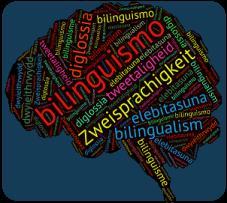Kořenář, M., Treffers-Daller, J., & Pliatsikas, C. (2023): Dynamic effects of bilingualism on brain structure map onto general principles of experience-based neuroplasticity. Scientific Reports, 13, 3428 DOI: 10.1038/s41598-023-30326-3
To access, click here:
Abstract:
Bilingualism has been linked to structural adaptations of subcortical brain regions that are important for controlling multiple languages. However, research on the location and extent of these adaptations has yielded variable patterns, especially as far as the subcortical regions are concerned. Existing literature on bilingualism-induced brain restructuring has so far largely overseen evidence from other domains showing that experience-based structural neuroplasticity often triggers non-linear adaptations which follow expansion-renormalisation trajectories. Here we use generalised additive mixed models to investigate the non-linear effects of quantified bilingual experiences on the basal ganglia and the thalamus in a sample of bilinguals with a wide range of bilingual experiences. Our results revealed that volumes of the bilateral caudate nucleus and nucleus accumbens were significantly related to bilingual experiences. Importantly, these followed a non-linear pattern, with increases followed by plateauing in the most experienced bilinguals, suggesting that experience-based volumetric increases are only necessary up to a certain level of bilingual experience. Moreover, the volumes of putamen and thalamus were positively predicted by bilingual experiences. The results offer the first direct evidence that bilingualism, similarly to other cognitively demanding skills, leads to dynamic subcortical structural adaptations which can be nonlinear, in line with expansion-renormalisation models of experience-dependent neuroplasticity.

